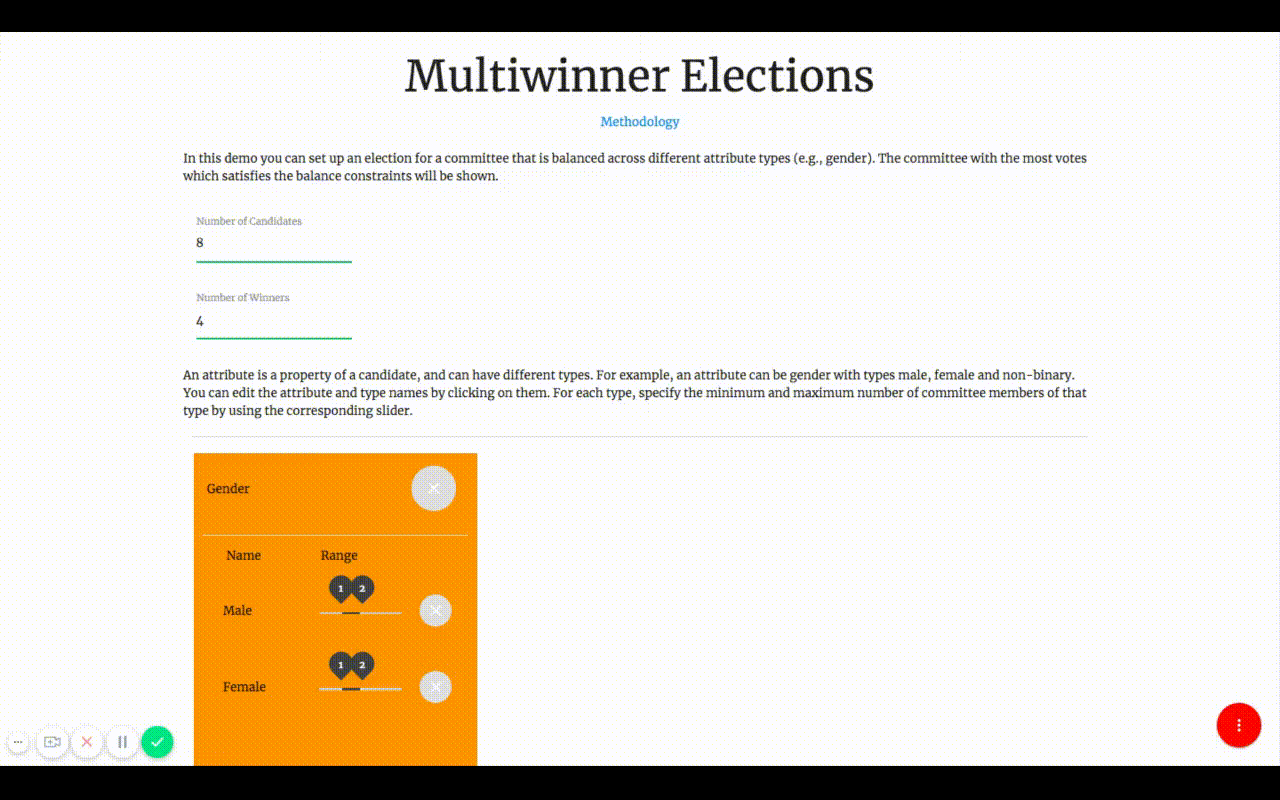Fair Multiwinner Elections
A multiwinner election is one where the objective is to select a committee from a set of candidates based on voter preferences. Standard election systems for multiwinner elections, however, have been shown to be biased towards minorities, by giving preference to committees that under-represent them.
Fair Multiwinner Elections is a prototype aimed to demonstrate "fair" voting algorithms for settings where there is an additional requirement that the winning committee should be fair with respect to a given set of sensitive attributes. It is based on the work done in the paper: Multiwinner Voting with Fairness Constraints, published in IJCAI-ECAI'18.
In our multiwinner prototype, a fair multiwinner election is demonstrated.
The candidates in the elections have properties, called attributes.
Each attribute can have different types.
For example, an attribute can be gender, with types male and female.
The user can specify fairness constraints on the attributes that ensure that the selected committee is not biased with respect to these attributes.
A committee which satisfies the fairness constraints is called Balanced.
The demo has three stages. In the first stage, the election is set up. This includes setting the number of candidates and the winners. It further includes setting the attributes, their types, and the allowed range for each type. In the example below, the two attributes are age and gender. For each attribute, the upper and lower bound on the number of people with a property in the winning committee can be specified using the range next to the property.

In the second stage, information about the candidates is filled. This includes the names of the candidates, how many votes they got, and also for each attribute, which type they belong to.

The final stage generates the optimal balanced committee. Note that because of the fairness constraints, the optimal balanced committee might not be the one that got the most total votes (as can be seen in the example below). Infact there can also be more than one optimal balanced committee which satisfies all constraints and have the same total number of votes. The output section displays both the optimal balanced committees and the optimal committee, had there been no fairness constraints.

You can try out the demo here.
This framework for Fair Multiwinner Elections was recently used in the primary elections of Appel Citoyen for the region of Valais, Switzerland. The demo for these elections, with pre-loaded constraints and candidate information, can be tried here. To know more about the use of our algorithm in these elections, take a look at this video and their blog post with the raw information of the constraints, candidates and votes. A few links to the press coverage of these elections: Canal 9, Le Temps, Le Nouvelliste, Rhone FM, Radio Chablais.
Note that the demo made available here has limited functionality and if you are interested in working with us, please contact us.
The implementation of the algorithm was written by Lingxiao Huang and the website was developed by Abhibhav Garg.